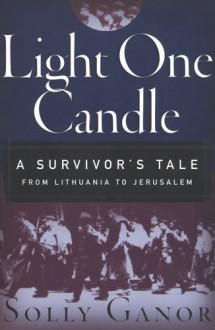
Oh man, this novel is so depressing yet filled with hope at the same time. It is much like One Day in the Life of Ivan Denisovich except that it does not cover just one day, and the narrator is a teenage Lithuanian girl who is deported with her family. The hardships she recounts are increasingly difficult to bear. Lina, her brother, and her mother are sent to a farm labor camp somewhere in a remote area of Russia along with hundreds of other deportees from various countries. Her father is sent to a Russian prison. The conditions are fairly primitive, the labor is hard and food is extremely scarce. But as bad as conditions are, it can always get worse.
Soviet labor camps had slightly better conditions than Nazi concentration camps but not much. This novel takes place during 1941-42, so the events are simultaneous with the Holocaust. We’ve always heard “Never Again” in regard to the Holocaust, but we need to include labor camps in that sentiment. These people were deported only because they committed crimes like having a profession such as doctor or teacher or attorney, helping others escape deportation, being the wrong ethnicity, refusing to cooperate with the Soviet regime, and so on. Lina, her family and the other deportees were considered criminals and many were coerced into signing confessions of their “crimes” with a sentence of twenty years in the camps. Lina’s brother was ten years old and others in the camp were even younger. Age did not make a difference when being sentenced as a criminal against the state.
Lina’s story is fiction, but the kinds of things that occur in the novel are based on real events. The author did extensive research and spoke with numerous former deportees. Thousands of people were deported and many died in either prison or labor camps. Thousands of people who currently live in countries formerly annexed by the Soviet Union have no idea what happened to some of their family. Many deportees just disappeared, never to be heard from again. This is a part of history that I was not totally unaware of, but we hear very little if any about it in our history classes in the US. So as noted before, the story is depressing and hard to bear. But young people especially need to hear this story, and Lina is a narrator that they can understand and hopefully empathize with


 Log in with Facebook
Log in with Facebook 








